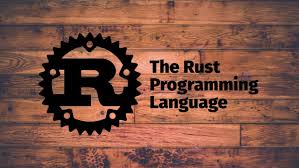
October 07, 2025
Exploring Rust: The Future of High-Performance Systems Programming
Exploring Rust: The Future of High-Performance Systems Programming
Have you ever had performance or memory safety difficulties when programming systems? Imagine a language with speed, safety, and concurrency. That language is Rust! This article will discuss about why Rust looks like a good high-performance systems programming language. This article explains why Rust is a good high-performance systems programming language. Discover what makes it unique, what challenges it answers, and how it is changing programming. Ready to learn why Rust is swiftly becoming the most popular system-level language? Let's begin!
What is Rust and Why Does It Matter?
Rust, a language of systems programming, possesses low-level control and high-level abstractions. C and C++ leak memory and overrun buffers but prioritize memory safety without sacrificing performance. Rust's tight type system, ownership model, and borrowing restrictions make it ideal for concurrent high-performance systems programming.
Rust is unique in that it erases compilation memory issues. It minimizes bugs and accelerates. Operating systems, game engines, and browsers take advantage of Rust's low-level, high-speed programming. The majority view Rust as the future of systems programming because of its speed, safety, and concurrency.
Rust's Memory Management and Safety
Manual memory handling in C and C++ complicates systems programming. Rust automatically handles memory without the use of a garbage collector. Rather, an ownership model guards memory and ensures performance.
The Rust notion of ownership works: Rust like the automatic cleanup when their owners leave. For safe memory management, Rust follows three rules:
- Each value has one owner.
- Transfer ownership without duplication (no dangling pointers).
- When you borrow references to values, you can only update one reference at a time, which stops race problems.
This model prevents Rust memory leaks and data races, common systems programming difficulties. Consider ownership in practice:
fn main() {
let s1 = String::from("Hello");
let s2 = s1; // Ownership of 's1' is moved to 's2'
// println!("{}", s1); // This will result in a compile-time error
println!("{}", s2); // Works fine because 's2' owns the data
}Using s1 after giving String ownership to s2 leads to a compile-time mistake. This prevents invalid memory access and ensures safety.
Concurrency in Rust
Concurrence sets Rust apart. High-performance computing systems such as web servers, databases, and parallel computing software need concurrence. Concurrent programming is however encumbered by inherent issues such as race conditions and data races that take place when numerous threads attempt to access shared information.
Data races are not possible in Rust because of its ownership principle and borrowing rules. Rust makes thread safety at build time to avoid threads mutating data simultaneously. You may have one mutable or many immutable references to data, but not both. This rules out concurrency challenges in other languages.
Example of Rust's thread-based concurrency model:
use std::thread;
fn main() {
let handle = thread::spawn(|| {
println!("Hello from a new thread!");
});
handle.join().unwrap(); // Wait for the thread to finish
println!("Main thread ends.");
}This example prints a message using a new thread. Rust stops threads from changing shared data in unsafe ways. This makes concurrent programming safer and easier to understand. You need to use this concurrent model to make high-performance apps with many threads.
Rust's Performance and Use Cases
Rust is known for its performance and it takes care of memory safety and concurrency issues without slowing down processing. Its fast C/C++ makes it useful for high-performance operating systems, game engines, and web browsers. Rust's Servo parallel browser engine makes web page processing faster, but Firefox's Quantum CSS engine works faster and needs less memory.
Blockchain developers like Polkadot use Rust for reliability and speed, moreover, its low-level control and high-level protection make it attractive for performance-intensive systems across sectors.
How to Get Started with Rust in 2025
Learning Rust is simpler than you think! First, use the official rust-lang.org installer to set up Rust. Cargo, Rust's package manager and build system, simplifies dependencies and project management.
Let's start writing a simple Rust program:
cargo new hello_world --bin
cd hello_world
cargo runThis starts a Rust project and runs "Hello, world!" Learn Rust with The Rust Book's vast and simple documentation.
As you learn Rust, make a command-line utility, web server using Actix or Rocket, or contribute to open-source projects. The Rust community is supportive, and learning it will help you design high-performance systems.
Conclusion
Rust still dominates systems programming in 2025 with its performance, memory safety, and concurrency. With its unique ownership model and rigorous borrowing rules, Rust is secure and efficient for building quick, reliable apps. Rust's low-level control and high-level safety impacted OS, browser, and game engine code. So, its time to discover Rust's full potential now!
393 views
